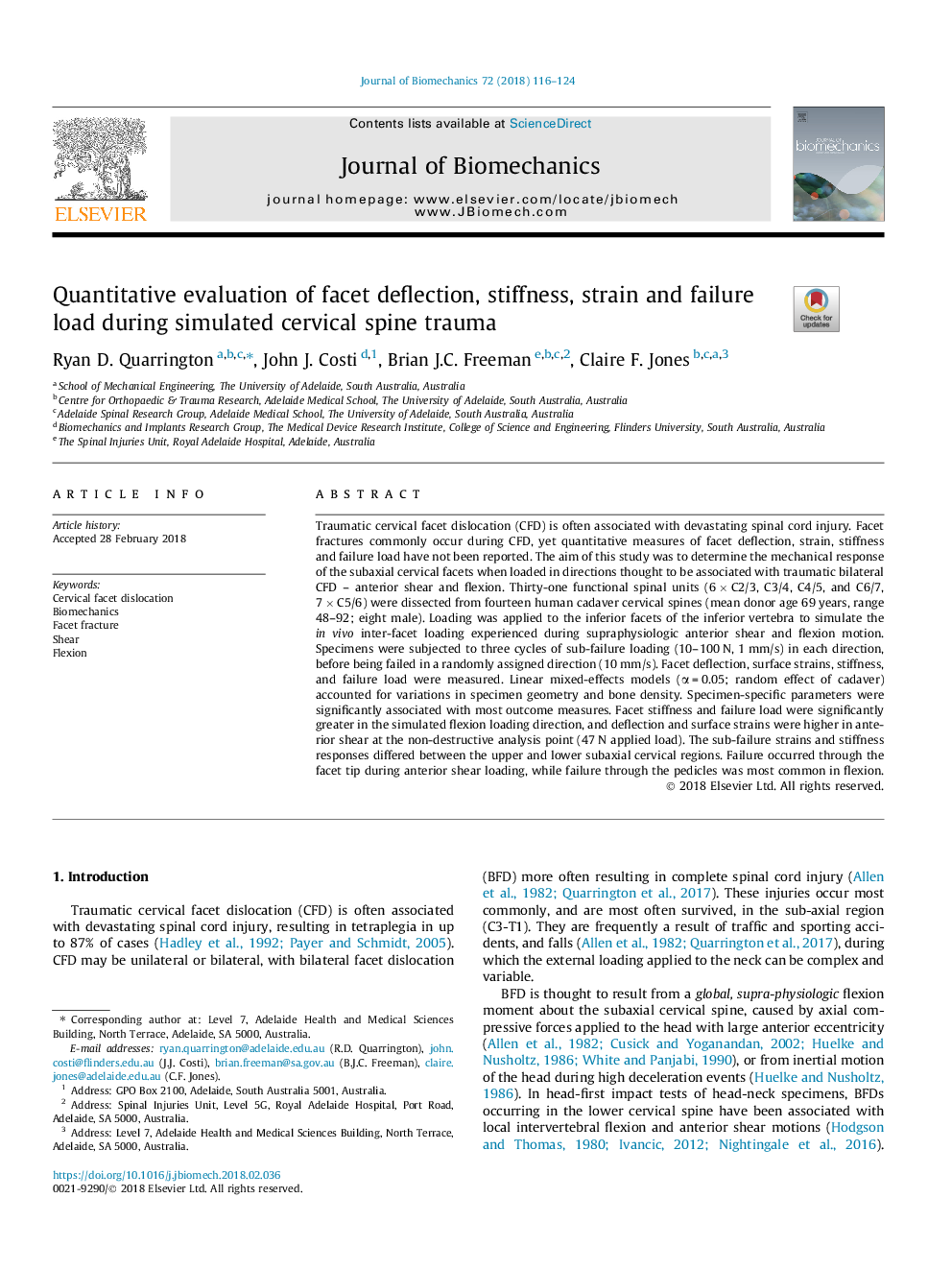| Article ID | Journal | Published Year | Pages | File Type |
|---|---|---|---|---|
| 7236301 | Journal of Biomechanics | 2018 | 9 Pages |
Abstract
Traumatic cervical facet dislocation (CFD) is often associated with devastating spinal cord injury. Facet fractures commonly occur during CFD, yet quantitative measures of facet deflection, strain, stiffness and failure load have not been reported. The aim of this study was to determine the mechanical response of the subaxial cervical facets when loaded in directions thought to be associated with traumatic bilateral CFD - anterior shear and flexion. Thirty-one functional spinal units (6â¯Ãâ¯C2/3, C3/4, C4/5, and C6/7, 7â¯Ãâ¯C5/6) were dissected from fourteen human cadaver cervical spines (mean donor age 69â¯years, range 48-92; eight male). Loading was applied to the inferior facets of the inferior vertebra to simulate the in vivo inter-facet loading experienced during supraphysiologic anterior shear and flexion motion. Specimens were subjected to three cycles of sub-failure loading (10-100â¯N, 1â¯mm/s) in each direction, before being failed in a randomly assigned direction (10â¯mm/s). Facet deflection, surface strains, stiffness, and failure load were measured. Linear mixed-effects models (αâ¯=â¯0.05; random effect of cadaver) accounted for variations in specimen geometry and bone density. Specimen-specific parameters were significantly associated with most outcome measures. Facet stiffness and failure load were significantly greater in the simulated flexion loading direction, and deflection and surface strains were higher in anterior shear at the non-destructive analysis point (47â¯N applied load). The sub-failure strains and stiffness responses differed between the upper and lower subaxial cervical regions. Failure occurred through the facet tip during anterior shear loading, while failure through the pedicles was most common in flexion.
Keywords
Related Topics
Physical Sciences and Engineering
Engineering
Biomedical Engineering
Authors
Ryan D. Quarrington, John J. Costi, Brian J.C. Freeman, Claire F. Jones,
